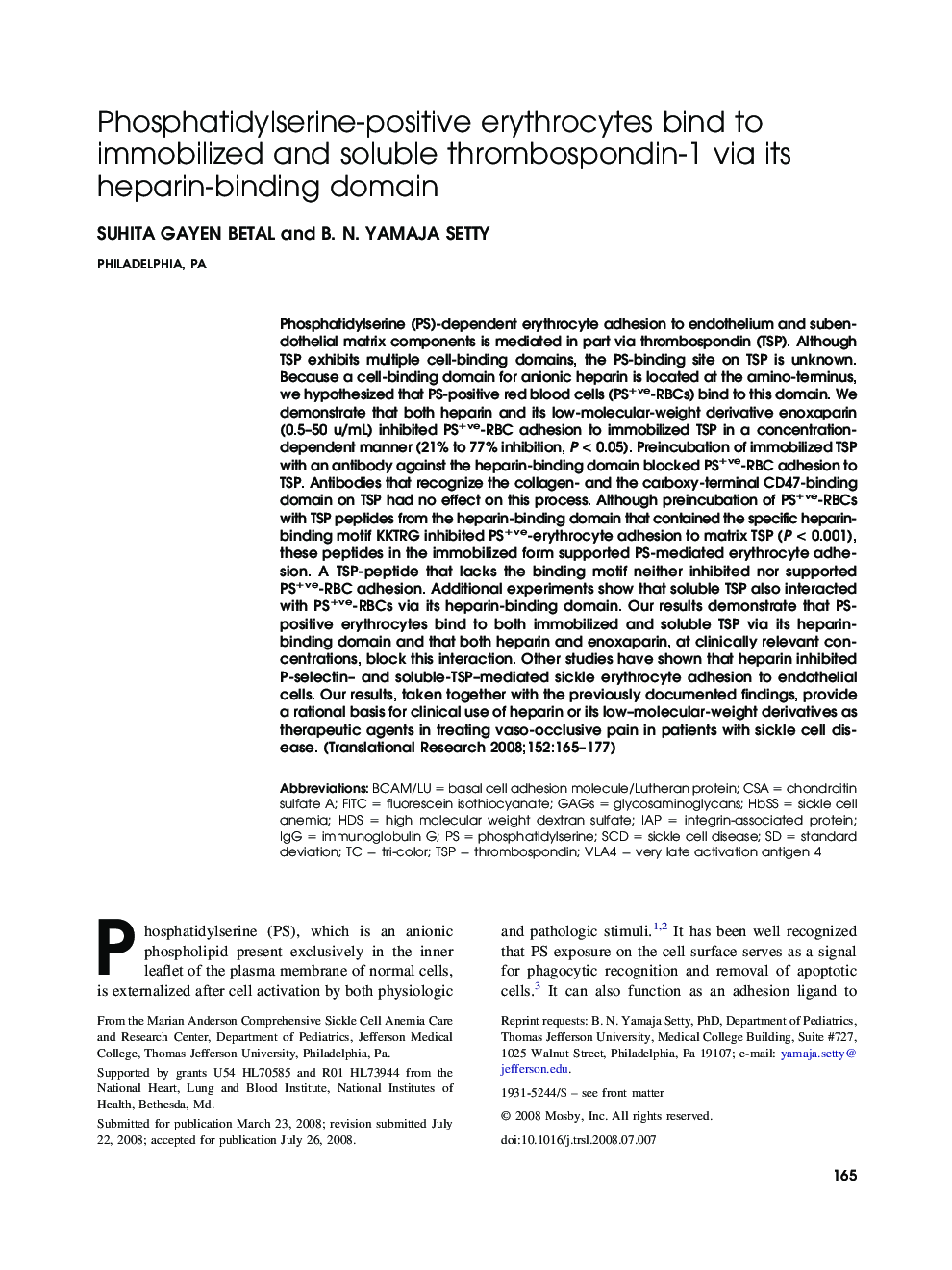| کد مقاله | کد نشریه | سال انتشار | مقاله انگلیسی | نسخه تمام متن |
|---|---|---|---|---|
| 3841302 | 1247971 | 2008 | 13 صفحه PDF | دانلود رایگان |

Phosphatidylserine (PS)-dependent erythrocyte adhesion to endothelium and subendothelial matrix components is mediated in part via thrombospondin (TSP). Although TSP exhibits multiple cell-binding domains, the PS-binding site on TSP is unknown. Because a cell-binding domain for anionic heparin is located at the amino-terminus, we hypothesized that PS-positive red blood cells (PS+ve-RBCs) bind to this domain. We demonstrate that both heparin and its low-molecular-weight derivative enoxaparin (0.5–50 u/mL) inhibited PS+ve-RBC adhesion to immobilized TSP in a concentration-dependent manner (21% to 77% inhibition, P < 0.05). Preincubation of immobilized TSP with an antibody against the heparin-binding domain blocked PS+ve-RBC adhesion to TSP. Antibodies that recognize the collagen- and the carboxy-terminal CD47-binding domain on TSP had no effect on this process. Although preincubation of PS+ve-RBCs with TSP peptides from the heparin-binding domain that contained the specific heparin-binding motif KKTRG inhibited PS+ve-erythrocyte adhesion to matrix TSP (P < 0.001), these peptides in the immobilized form supported PS-mediated erythrocyte adhesion. A TSP-peptide that lacks the binding motif neither inhibited nor supported PS+ve-RBC adhesion. Additional experiments show that soluble TSP also interacted with PS+ve-RBCs via its heparin-binding domain. Our results demonstrate that PS-positive erythrocytes bind to both immobilized and soluble TSP via its heparin-binding domain and that both heparin and enoxaparin, at clinically relevant concentrations, block this interaction. Other studies have shown that heparin inhibited P-selectin– and soluble-TSP–mediated sickle erythrocyte adhesion to endothelial cells. Our results, taken together with the previously documented findings, provide a rational basis for clinical use of heparin or its low–molecular-weight derivatives as therapeutic agents in treating vaso-occlusive pain in patients with sickle cell disease.
Journal: Translational Research - Volume 152, Issue 4, October 2008, Pages 165–177